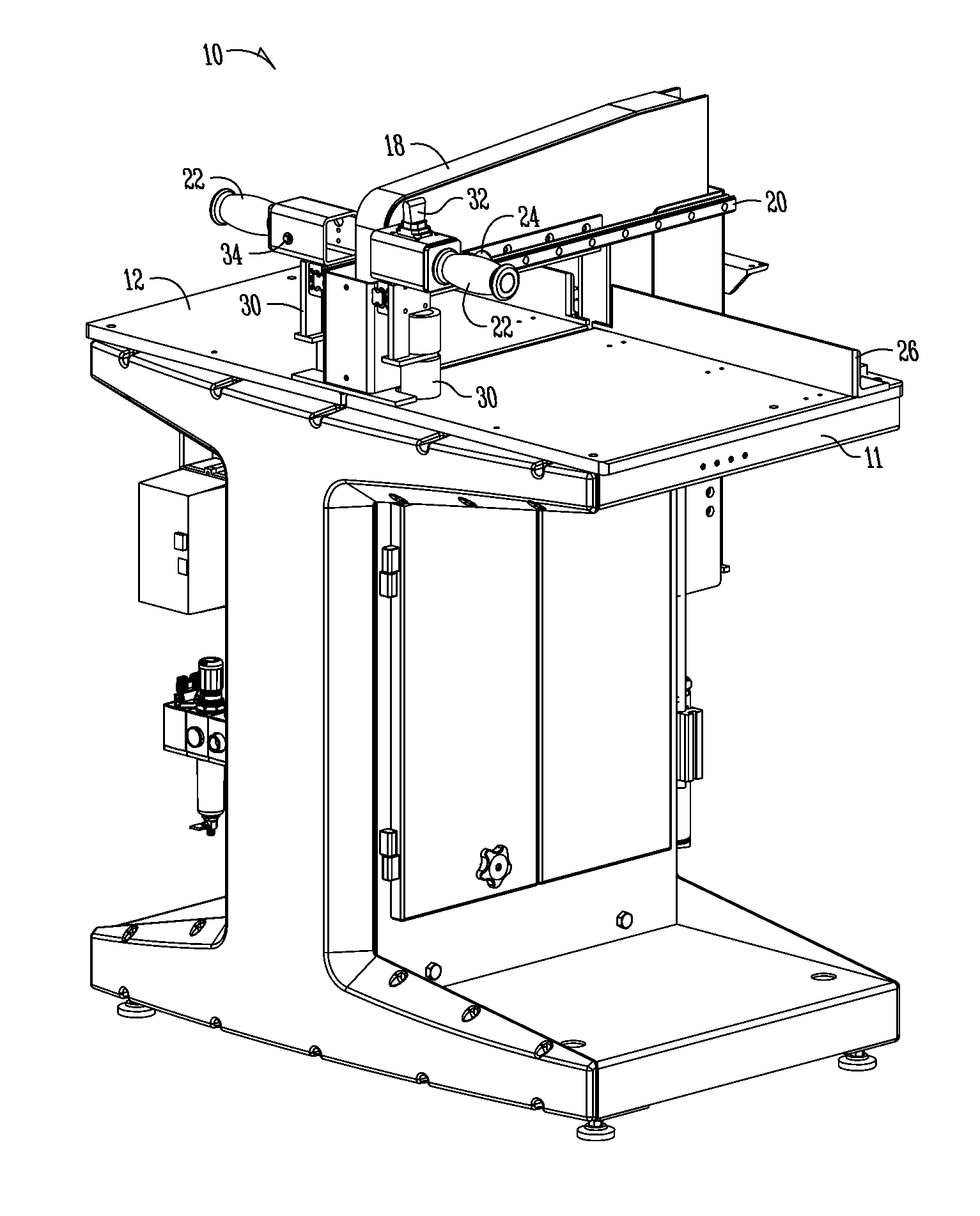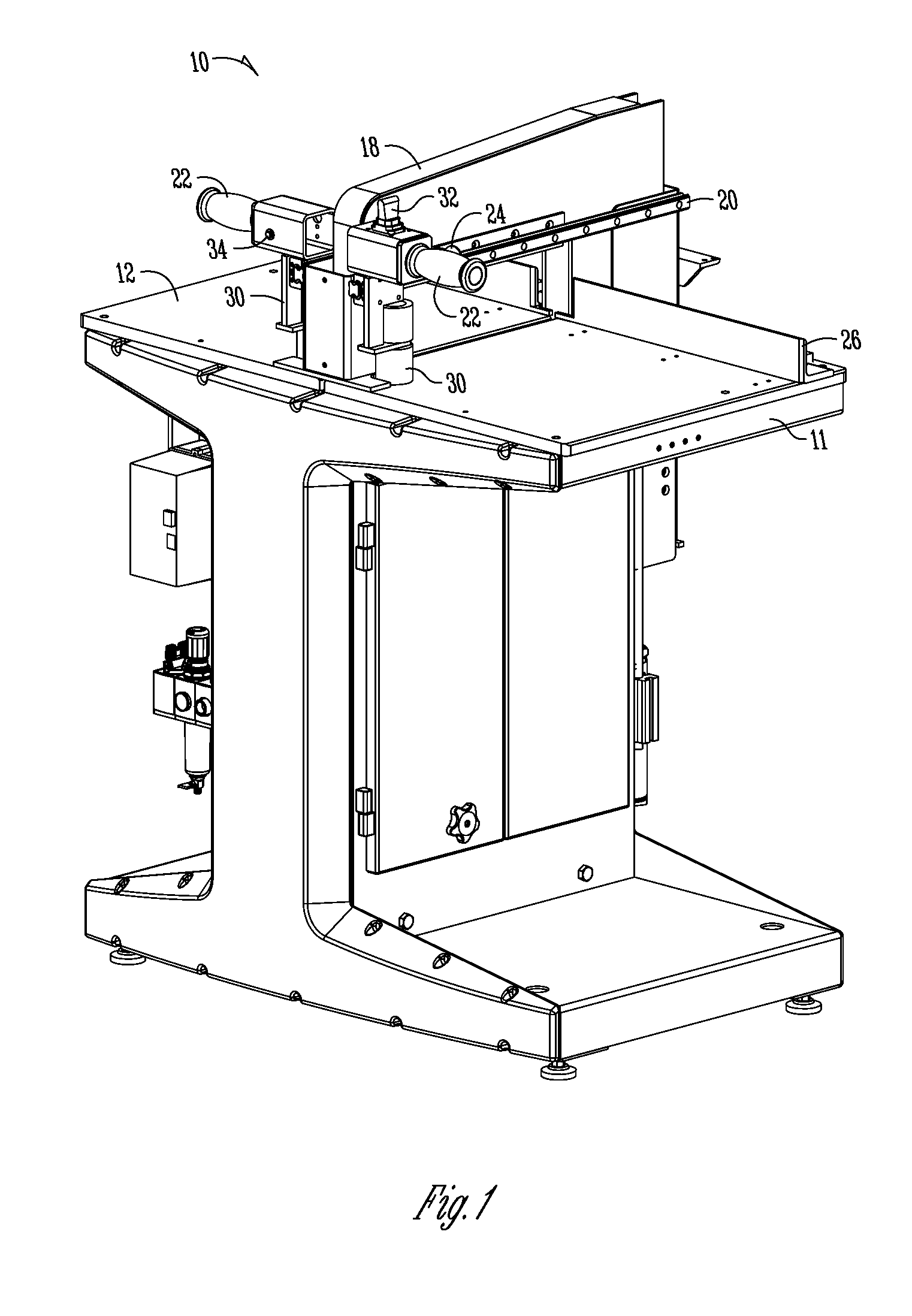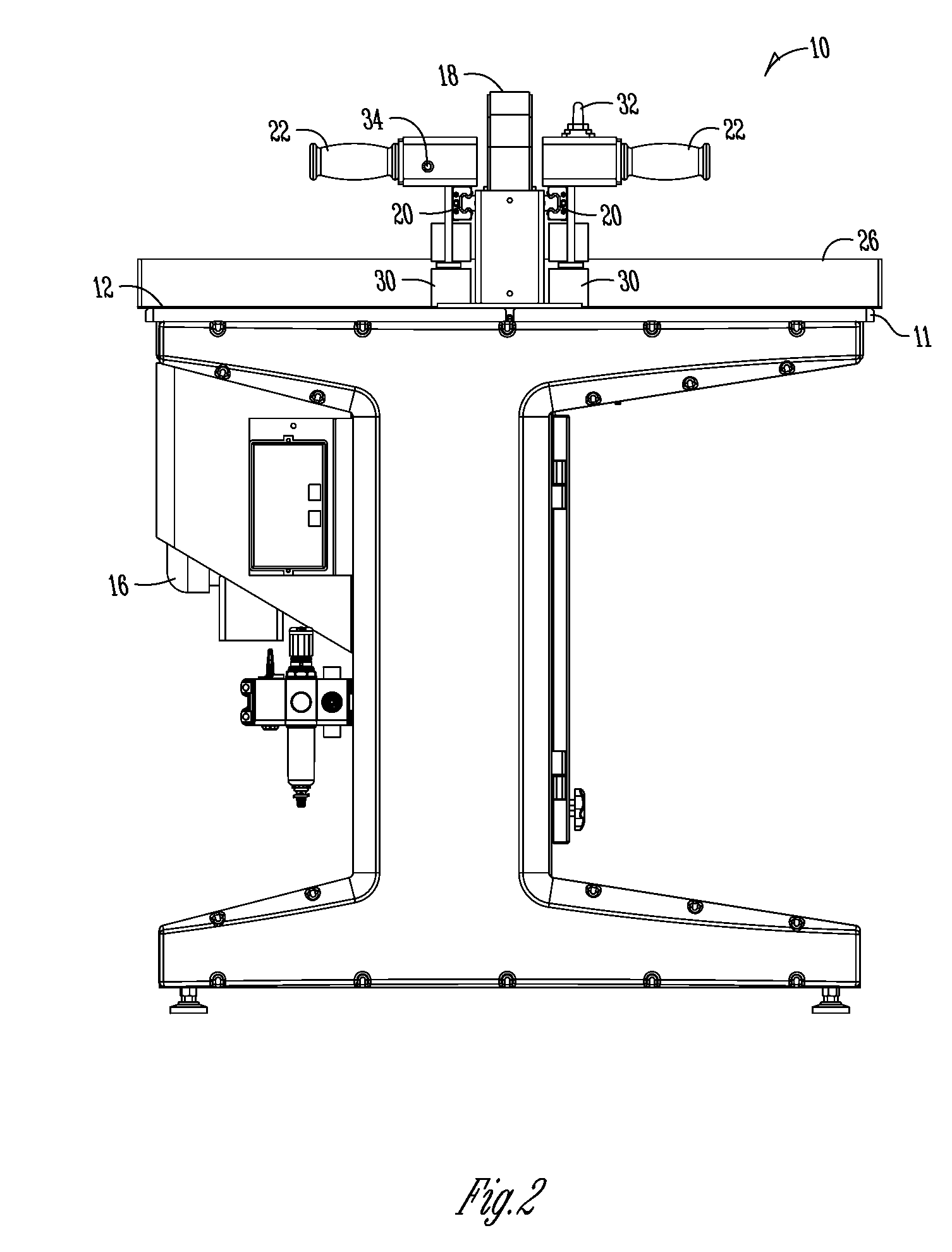Method and apparatus for sawing lineal material to length
a lineal material and method technology, applied in the direction of metal sawing accessories, instruments, static/dynamic balance measurement, etc., can solve the problems of not preventing the operator from accidentally cycling the saw, not being able to operate, adding significant cost and complexity to the product, etc., to reduce or eliminate the disadvantages and shortcomings, keep the operator's hands a safe distance from the cutting area, and eliminate time and effort
- Summary
- Abstract
- Description
- Claims
- Application Information
AI Technical Summary
Benefits of technology
Problems solved by technology
Method used
Image
Examples
Embodiment Construction
[0016]Details of the preferred embodiment of the present invention will now be discussed with reference to FIGS. 1-5.
[0017]An improved safety device for an electrically powered crosscut saw is described and best shown in FIG. 1. An electrically powered crosscut saw 10 features a base 11 supporting a tabletop 12 through which a saw blade 14 (see FIG. 4) may pass in order to cut stock. The stock is secured by an operator against a back fence 26 so as to ensure a clean cut. A blade guard 18 is typically located on the tabletop 12 and aligned with the saw blade 14 such that when the saw blade 14 is cutting the stock, the operator is separated from the saw blade 14 by the blade guard 18. The blade guard 18 thereby protects the operator from debris during the cutting process, while also reducing the potential for contact between the operator and the saw blade 14. The blade guard 18 also acts as a top clamp and may move vertically to secure stock.
[0018]According to the preferred embodiment...
PUM
| Property | Measurement | Unit |
|---|---|---|
| time | aaaaa | aaaaa |
| length | aaaaa | aaaaa |
| distance | aaaaa | aaaaa |
Abstract
Description
Claims
Application Information
 Login to View More
Login to View More - R&D
- Intellectual Property
- Life Sciences
- Materials
- Tech Scout
- Unparalleled Data Quality
- Higher Quality Content
- 60% Fewer Hallucinations
Browse by: Latest US Patents, China's latest patents, Technical Efficacy Thesaurus, Application Domain, Technology Topic, Popular Technical Reports.
© 2025 PatSnap. All rights reserved.Legal|Privacy policy|Modern Slavery Act Transparency Statement|Sitemap|About US| Contact US: help@patsnap.com



